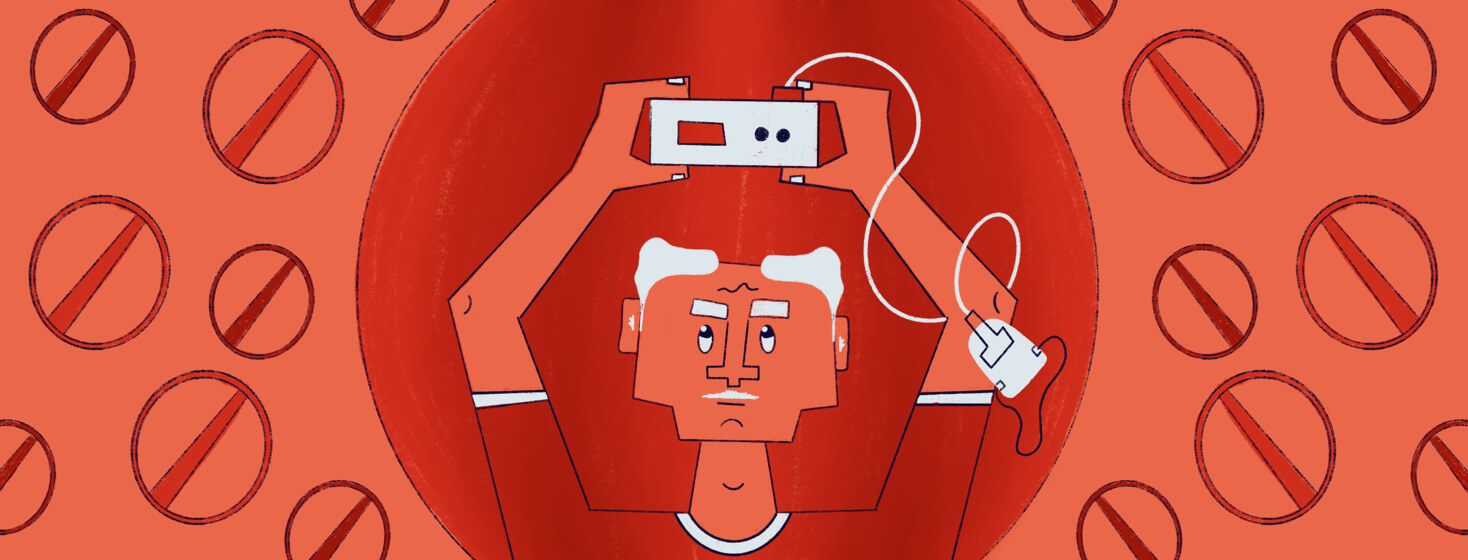What Not to Do When Using CPAP
Thanks to the generosity of folks who’ve used CPAP for years, there are many great tips for new users getting to know and use their machines. Do this, do that...so much great advice!
But sometimes we aren’t told what we should avoid.
This 3-part series spotlights things that both new and established CPAP users should avoid when it comes to using their therapy. They include:
- The Don’ts of CPAP Usage
- The Don’ts of CPAP Cleaning
- The Don’ts of CPAP Care and Safety
This time, we look at The Don’ts of CPAP Usage.
The don’ts of CPAP usage
Don't change your machine's prescription settings
CPAP air pressure is a prescribed substance (even if it’s pressurized air). Just like you shouldn’t change a medication dosage without first consulting your doctor, you shouldn’t mess with your pressure settings. You could damage your machine, void your warranty, or make your therapy less effective — even intolerable — by doing so.
Don't ignore your machine's comfort settings
Your CPAP machine offers settings related to temperature, humidity, and comfort that you’re welcome to adjust. If you’re unsure if you should make changes or don’t know how to make the changes, you can either consult your user’s manual or call your sleep clinic for support from an equipment expert.
Don't elevate your CPAP machine higher than your head
Make sure your machine sits at or below the height of your reclining head. Otherwise, water that collects in the hose could drain directly into your nose rather than back into the chamber.
Don't put your CPAP machine on the floor
The air intake on your machine is more likely to suck in particulate matter closer to the floor if you do so. Pets can more easily access your machine, increasing damage risks.
Don't forget to wash your face before using CPAP
Many problems with facial acne related to CPAP arise because the headgear itself isn’t clean. Or, if the headgear is clean, it’s placed on skin that isn’t clean. Oils, bacteria, makeup, and dirt become trapped and lead to irritated skin. Always put a clean mask on a clean face.
Don't overtighten your headgear
This torques the headgear and cushion so that they don’t “seat” properly on the face, creating greater gaps and leaks. You should be able to slide a finger between your mask cushion and your face; masks are designed to use the incoming pressurized air to complete the seal.
Don't forget to use your CPAP during naps
Sleep apnea happens every time you sleep, even if it’s during the day. Your best practice: always use your machine during every sleep period.
Don't avoid CPAP if you have a respiratory infection
Using CPAP when you have a head cold or upper respiratory infection will actually help you get over your illness sooner. This is because the warm, moist air will keep your breathing passages open and you’ll get more sleep, which your body needs when you’re sick.
Don't use anything but distilled water in the humidifier
Tap water and bottled water have chemicals, microorganisms, and minerals that can make you sick or damage your machine. Also, do not put any kind of essential oil or other non-water liquid into your humidifier, as these aren’t safe for inhaling into the lungs.
Don't use petroleum products inside your mask cushion
Petroleum products are composed of volatile compounds that are dangerous when inhaled into the lungs through the highly pressurized air delivery system of CPAP. Menthol products in a petroleum base are not safe to place in the nostrils or anywhere where they can be inhaled for this reason.
Learn more about using CPAP
Check out the following 10 selected resources to learn more about making the most of your CPAP equipment.
- Most Common Mistakes When Starting CPAP Therapy
- Learning to Adjust to CPAP
- My First New CPAP in 15 Years
- The Mask Fitting Process
- Making the Most of Your CPAP Machine Comfort Settings
- Not All Water Is the Same When It Comes to CPAP
- Do I Have to Use My CPAP Humidifier?
- The CPAP Hose: Unsung Link to Sleep Apnea Therapy
- Heated CPAP Tubing Versus CPAP Hose Covers
- Troubleshooting Common CPAP Tube and Machine Issues

Join the conversation